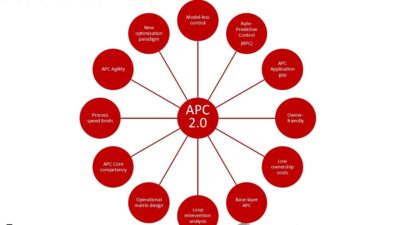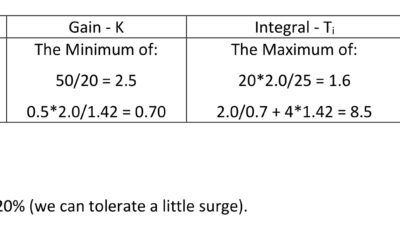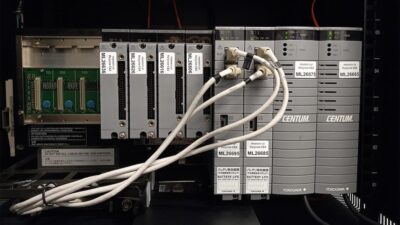You need not go further than question three of the 1999 Control Engineering Flowmeter Study to see just how complex the state of flow measurement is today. The question is simple enough. It asked 1,500 selected CE readers what types of flowmeters they use. That ostensibly innocent question opened the flood gates.
|
You need not go further than question three of the 1999 Control Engineering Flowmeter Study to see just how complex the state of flow measurement is today. The question is simple enough. It asked 1,500 selected CE readers what types of flowmeters they use. That ostensibly innocent question opened the flood gates. There were 22 different answers.
Matching the seemingly endless number of different flowmeters are the seemingly infinite conditions where they can be applied. There are the different media flowmeters measure and differing weights and densities; there are impurities such as dirty liquids, slurries, liquids with entrained gases, and gases with suspended liquid (steam), where the contaminants can cause false readings. The list of changing conditions that makes accurately measuring flow more difficult goes on and on, and new technologies appear regularly to adapt to those conditions.
To bring clarity to this fast-flowing industry, Control Engineering polled 1,500 readers to see what the major flowmeter trends are. Of the 1,500 surveyed, 366 individuals responded, resulting in a 24.4% overall response rate. Ninety-five percent of the 366 respondents (348) qualified for the survey by saying they recommend, specify, and/or buy flowmeters.
Where meters fit most
The majority of respondents’ primary process applications (58%) involved continuous processing, while batch processing accounted for 31% of the responses. Separating by industry segment, raw materials processing most uses flow measurement, based on number of unit and dollar purchases in the last year. Fifty-eight respondents from this segment bought 1,082 units for a total cost of just over $2 million. The transportation and communication segment accounted for two respondents who purchased 120 units at a cost of $430,000. Nine respondents represented the manufacturers of machinery and equipment for manufacturing and service industries segment, and bought 70 units at a cost of $184,500 last year.
Applications where flow is measured in a full pipe still outdistance partial flow. More than 9 out of 10 survey’s respondents (93%) apply flowmeters to full-flow pipes, where just over 3 out of 10 (34%) apply them to open-channel or partial-flow pipes.
Because most users employ several different flowmeter types within operations, the results exceeded 100% when asked what kinds respondents use. Orifice flowmeters—owing to their simple construction, relatively low cost, and because they have no moving parts to break—were the most widely used in the study, appearing in 50.3% of respondents’ applications.
After a little over a decade in operation, mass flowmeters have already become the survey’s second most popular type of flowmeter. Developed and commercialized in the 1980s, mass flowmeters’ performance is favored because of their accuracy despite changing fluid parameters such as density, viscosity, pressure and/or temperature. These meters are seen in 46.8% of the respondents’ applications.
Only 0.3% separated the third and fourth spots, where turbine flowmeters and magnetic flowmeters finished with 46.6%, and 46.3% response rates, respectively (see graph).
What users need, and need to do
Though the industry has continued efforts to increase flowmeter reliability and accuracy, these two factors still remain a concern. When asked to rate the importance of key flowmeter characteristics, those two were at the top of the list, followed by ease of calibration, online configuration and trouble shooting, and low cost of ownership (see graph).
Brian Hayes, manager of field instrumentation with Bailey-Fischer & Porter Co. (Warminster, Pa.), says fault with reliability and accuracy may not lie with the flowmeter itself, but with proper selection. He’s also careful when characterizing flowmeter performance. “When a flowmeter doesn’t perform to user expectations, we can’t say it failed. Failure means it doesn’t work at all upon startup. The industry standard for failure out of the box is 1%. Acceptable performance levels vary, but they most certainly are higher than 1%, so we can’t confuse the two concepts.” Mr. Hayes goes on to say that Bailey-Fischer & Porter has several tools to help users select flowmeters properly.
Although digital communications enables users to remotely maintain flowmeters, it has yet to develop a strong presence in the market. The standard 4-20 mA signal came in as the most-used form of communication, gathering 83% of the respondents’ votes. The next closest competitor is the 0-10 V signal with 24% of the responses, and HART with 19% (result exceeds 100% due to multiple responses).
Who’s buying?
In a worst-case scenario, the flowmeter market will be slightly ahead of breaking even in the next year, according to the survey. When respondents were asked what their company’s flowmeter purchases will be like in the next 12 months, 48% say they expect their company’s purchases to be about the same. Seventeen percent expect purchases to increase, while eight percent expect purchases to decrease in the next year. Twenty-six percent say they are unsure what the next year holds for their company’s flowmeter purchases.
The rising popularity of mass flowmeters, as well as the respondents’ strong desire for improved reliability and accuracy indicate users’ willingness to try new technologies to attain the reliability and accuracy they look for. This puts the pressure on manufacturers to continue with new techniques for accurate measurement if they want to sway those remaining buyers who aren’t sure about purchases in the near future. So, as flow media grows murkier, it’s quite clear what manufacturers must do to keep their flowmeter business prosperous.
Flowmeter products
For more information about flowmeters, visit www.controleng.com/info .
High-temperature Coriolis meter
Boulder, Colo.— Elite CMF300A Coriolis meter is a high-temperature meter designed for the hydrocarbon processing industries. The Elite meter measures flow rates from 0 to 10,000 lb/min. and works within a 32 to 650 °F range. The meter has no small impulse lines that can plug nor does it need seals or flush fluids. Wetted parts are made of 316L stainless steel. Base accuracy is said to be 60.1% of rate, allowing users to perform mass balance operations for performance optimization regardless of heavy or viscous flows. Micro Motion
Saturated steam flow measurement
Spring House, Pa.— The Moore 340S SteaMeter differential pressure steam flowmeter is a recent addition to the company’s XTC family of pressure transmitters. The SteaMeter combines differential pressure measurement with custom steam flow calculations to measure saturated steam flow, and can calculate and transmit mass energy flow, pressure, and differential pressure. Moore Process Automation Solutions
Low-conductivity magmeter
Peabody, Mass.— Capaflux magmeters have noncontacting, capacitively coupled electrodes, allowing them to accurately measure low-conducting liquids, liquids with high solid content, or liquids that coat electrodes. The meter employs a preamplifier located within the ceramic tube to eliminate noise pickup and plant pipe vibration interference normally associated with nonwetted electrode use. The wafer-like electrodes are embedded in the flowtube liner. Liquid inside the tube acts like the plates in a capacitor, with the ceramic flowtube being the nonconductive dielectric between electrodes. Krohne
Pure measurement
Newnan, Ga.— The HiPurity Yewflow vortex meter has been designed to measure ultra pure liquids and gases commonly found in the semiconductor, pharmaceutical, and biotech industries. The meter’s body is made of 316L stainless steel, and specially purged and double bagged to eliminate contamination. Standard features include a digital sensor encapsulated from the process, integral or remote mounted, microprocessor-based smart electronics, Foundation Fieldbus, Brain, or HART communications, universal amplifier, and surface-mount electronics for long-term stability. Yokogawa Corp. of America
Straight-tube Coriolis meter
Greenwood, Ind.— Promass mass flowmeters use a single tube for increased cleaning safety, reduced risk for clogging, and easy inspection. It is said to be well-suited for high-concentration slurries and fluids where no shear force is allowed. The straight tube is made of titanium, with a torsion-mode, balanced measuring system. The full bore design provides virtually no pressure drop. Endress+Hauser
Multimedia meter
Phoenix, Ariz.— The SVM 3000 Plus smart vortex meter measures liquids, gases, and steam. It supplies low pressure loss, and is said to provide long-term stability and a broad measuring range. This meter provides direct volumetric measurement of such media as compressed air, demineralized water, petroleum products, oxygen, nitrogen, and even cryogenic fluids. The instrument is able withstand high vibration and thermal shock, and is available in wafer, flanged, high-pressure, and dual-sensor versions. Honeywell IAC
Flowmeter series for sanitary applications
Foxboro, Mass. —Foxboro I/A Series of sanitary magnetic, vortex, and Coriolis flowmeters are said to offer excellent rangeability, accuracy, and repeatability. Coriolis and magmeters comply with special food industry regulations, and all members of the Series come with a PC-based configuration tool to ease maintenance and troubleshooting. Foxboro
Vortex meter earns FF certification
Eden Prairie, Minn. —Rosemount Inc.’s Model 8800A is now authorized to bear the Fieldbus Foundation registration checkmark. The meter’s shedder bar design prevents fluid from clogging the sensor mechanism. The patented sensing system requires no process seals, is said to eliminate fugitive emissions, and enables flowmeter maintenance while fluid is in the pipe. The meter is also said to provide vibration immunity due to its mass balanced design and adaptive digital signal processing. Fisher-Rosement
Electrodeless magmeter
Warminster, Pa.— The Series 1477 magnetic flowmeter is designed with nonwetted electrodes and is able to measure fluids with ultra low conductivities. A patented process uses a capacitance measurement technique to sense the amplitude of a voltage induced into the fluid by Bailey-Fischer & Porter’s nonuniform magnetic field design. Having the nonwetted electrodes means the meter is immune to coating buildup and hard slurry noise. the ceramic liner is abrasive resistant and suitable for sanitary applications. Bailey-Fischer & Porter
Multipoint measurement
San Marcos, Calif.— MT Series multipoint mass flowmeters boast high accuracy with up to 16 flow sensor output points per meter. The meter can diagnose duct temperature stratification with dynamic temperature output capability, and has a range of–50 to 850 °F. Continuous built-in testing and calibration adjustment prevent drift for repeatability, and an averaging filter can dampen response to rapid process fluctuations. RS-232C, RS-422, or RS-485 serial ports for communication with field devices are available, as well as 4-20 mA, 1-5, or 0-10 V dc outputs. Fluid Components International



